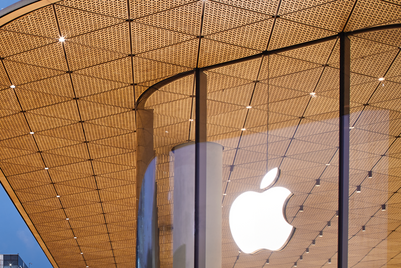
TOKYO - Spotify launched in Japan yesterday after a long period of speculation. The company will provide a free advertising-supported service and a paid service at 980 yen (around US$10) per month. It will also offer lyrics for karaoke enthusiasts. It is currently operating in invitation-only beta mode.
A number of players are already active in Japan’s digital music subscription space. According to statistics from eMarketer, Amazon Prime Music leads the sector in terms of users, followed by Line Music and Apple Music. While Spotify is a late arrival, it has an advantage in offering a free service. However, YouTube is also a powerful indirect competitor.
Japan is the world’s second-largest music market, with sales annual of close to $3 billion. While sizable, it is shrinking: the figure is down from around $5 billion 10 years ago.
Spotify aims to position itself as a service that supports musicians and the industry as a whole. But its success in the market is far from guaranteed. Streaming has not caught on in Japan as it has in similarly developed markets, with physical CDs still accounting for more than 80 percent of sales. Tower Records, for example, still operates around 85 outlets in Japan.
eMarketer cites statistics that show only around quarter of Japanese smartphone users have subscribed to streaming services. But among those users, affordability is shown to be a key consideration, which puts Spotify in a good position.
Other priorities are, understandably, the selection of music available, sound quality and playlist functionality, eMarketer said.
Marc Wesseling, co-founder of Tokyo-based creative agency UltraSuperNew, is optimistic about Spotify’s prospects in Japan, but said it’s ultimately “all about the catalogue” that it can offer. Negotiating with record companies in a highly fragmented market with protectionist inclinations will not be easy.
For advertisers, Wesseling said the Spotify platform is worth considering, but admitted that ads in the free model can become “annoying”.
Wesseling said people’s willingness to tolerate commercial messaging “depends on the setting”: at home, people would be more inclined to opt for the premium service with no ads, while in an office environment, where Spotify as used as background entertainment, people would be more open to the ad-supported model, he said.
Globally, Spotify has around 60 million unpaid and 40 million paid customers. It has yet to turn a profit.



.jpg&h=334&w=500&q=100&v=20250320&c=1)


.jpg&h=334&w=500&q=100&v=20250320&c=1)
.jpg&h=334&w=500&q=100&v=20250320&c=1)

.png&h=334&w=500&q=100&v=20250320&c=1)









.jpg&h=268&w=401&q=100&v=20250320&c=1)